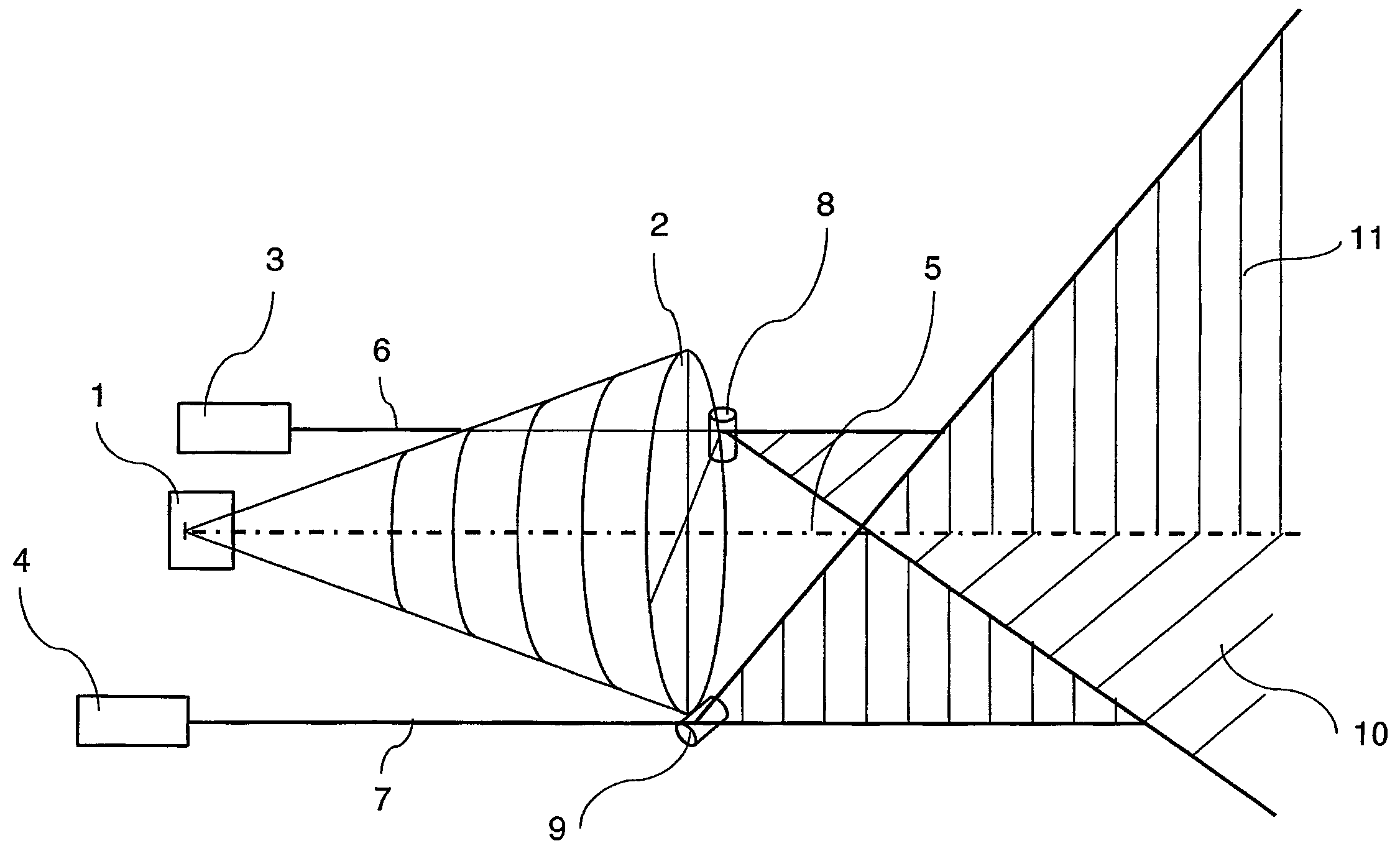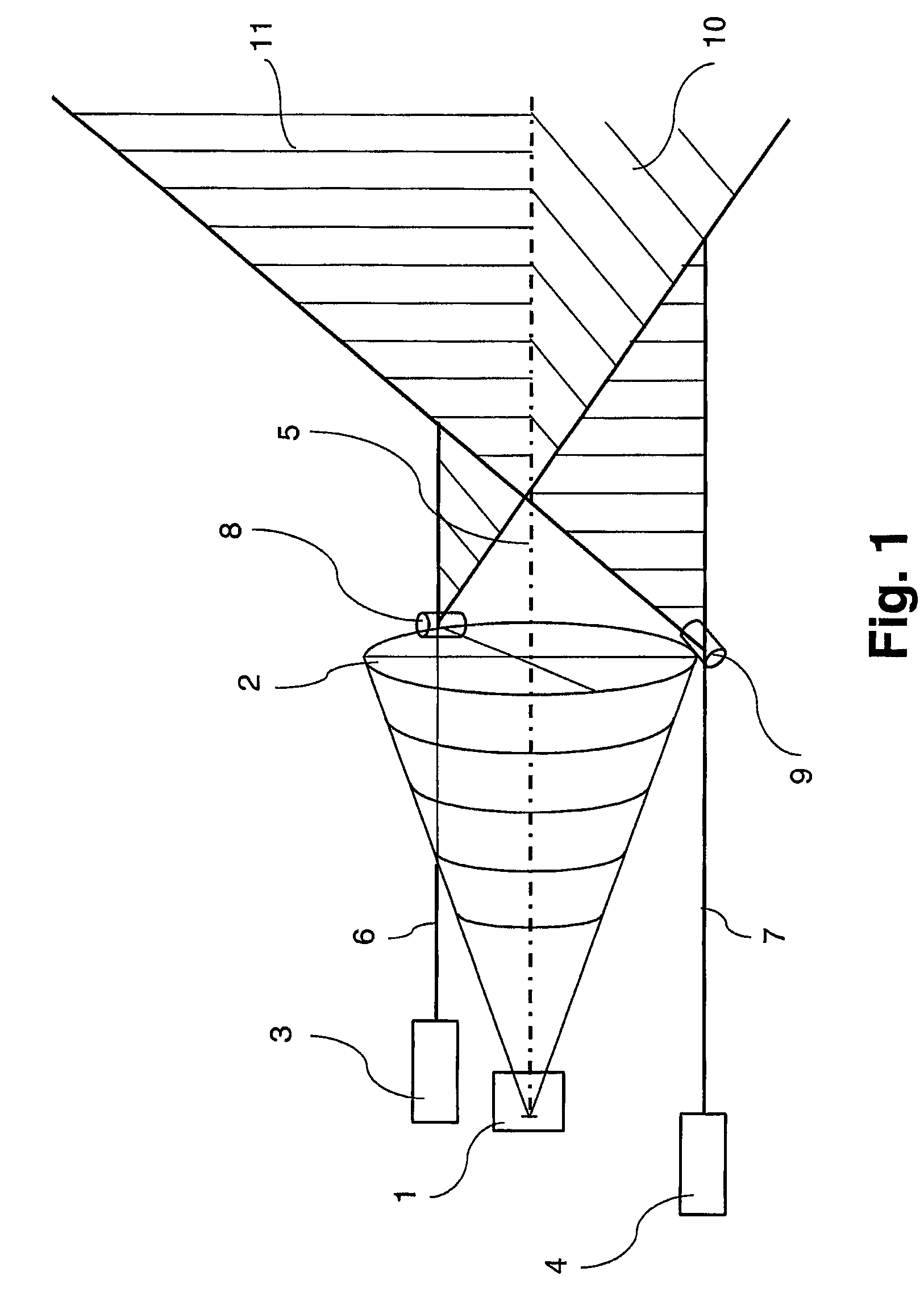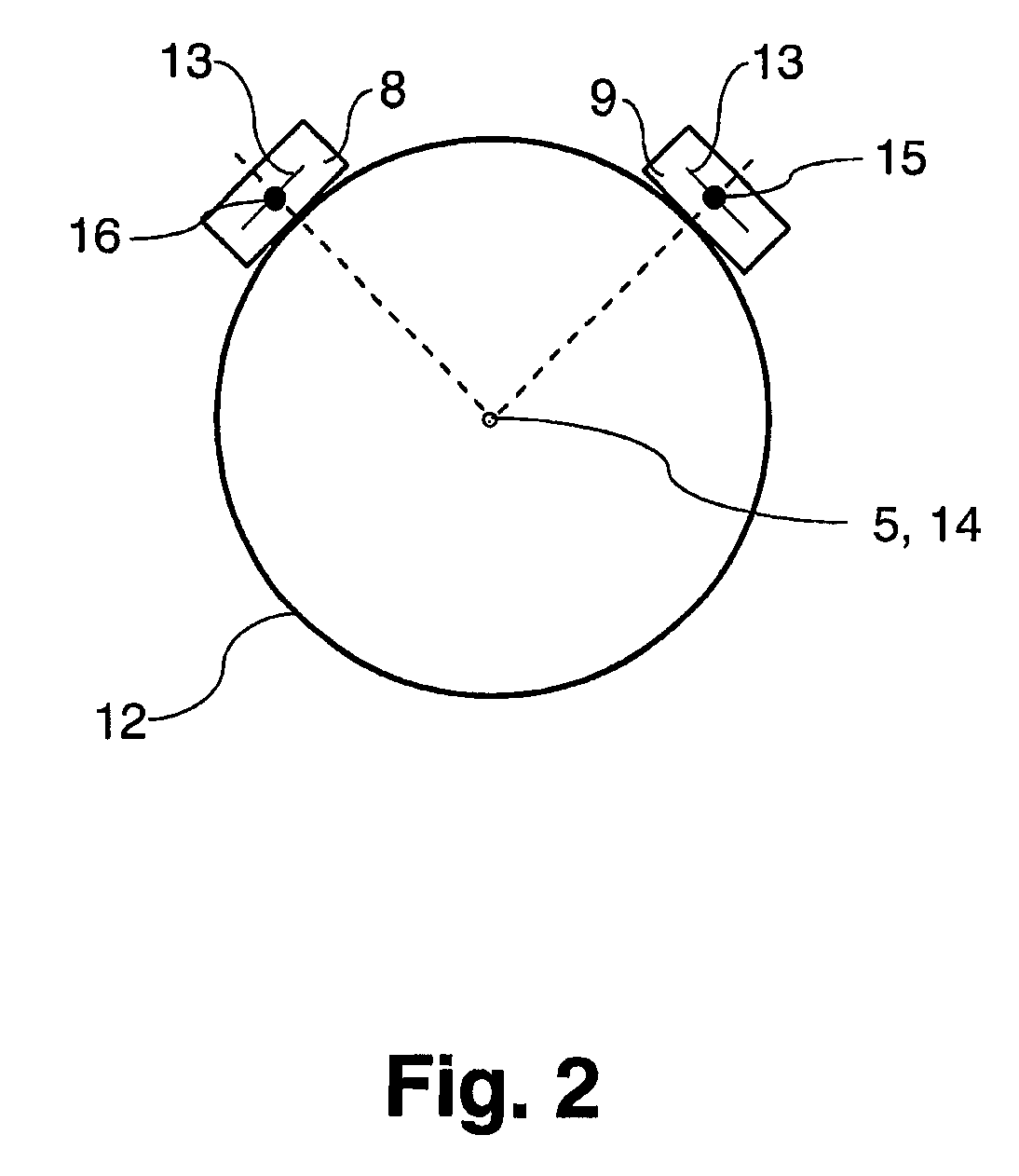Sighting device and additional device for measuring, working, and/or operating with or without contact
a technology of a sighting device and an additional device, which is applied in the direction of surveying, navigation, weapons, etc., can solve the problems of difficult compensation, reducing the effective aperture of the infrared measurement channel, and introducing central holes in the objective is relatively expensive, so as to achieve the effect of avoiding unnecessary losses, simple adjustment, and high economic production of optical components
- Summary
- Abstract
- Description
- Claims
- Application Information
AI Technical Summary
Benefits of technology
Problems solved by technology
Method used
Image
Examples
Embodiment Construction
[0040]FIG. 1 shows in a schematic side view a first embodiment example of a device according to the invention with a measuring device which can be used without contact and works interactively with an object of any type at a predetermined target location, where the target location's position can be fixed by means of a sighting device. The device comprises a detector 1 on which the electromagnetic radiation originating from a measured spot on an object not represented can be imaged by means of a lens 2.
[0041]The sighting device includes two lasers 3, 4 which are disposed to the side of the optical axis 5 of the detector 1. The lasers 3, 4 generate two sighting rays 6, 7 which run parallel to the optical axis 5 of the detector 1 and strike two optical components 8, 9 disposed on the outer circumferential surface of the lens 2. The first laser 3 and the associated optical component 8 are located, according to the perspective representation in FIG. 1, behind the optical axis 5 while the ...
PUM
 Login to View More
Login to View More Abstract
Description
Claims
Application Information
 Login to View More
Login to View More - R&D
- Intellectual Property
- Life Sciences
- Materials
- Tech Scout
- Unparalleled Data Quality
- Higher Quality Content
- 60% Fewer Hallucinations
Browse by: Latest US Patents, China's latest patents, Technical Efficacy Thesaurus, Application Domain, Technology Topic, Popular Technical Reports.
© 2025 PatSnap. All rights reserved.Legal|Privacy policy|Modern Slavery Act Transparency Statement|Sitemap|About US| Contact US: help@patsnap.com



